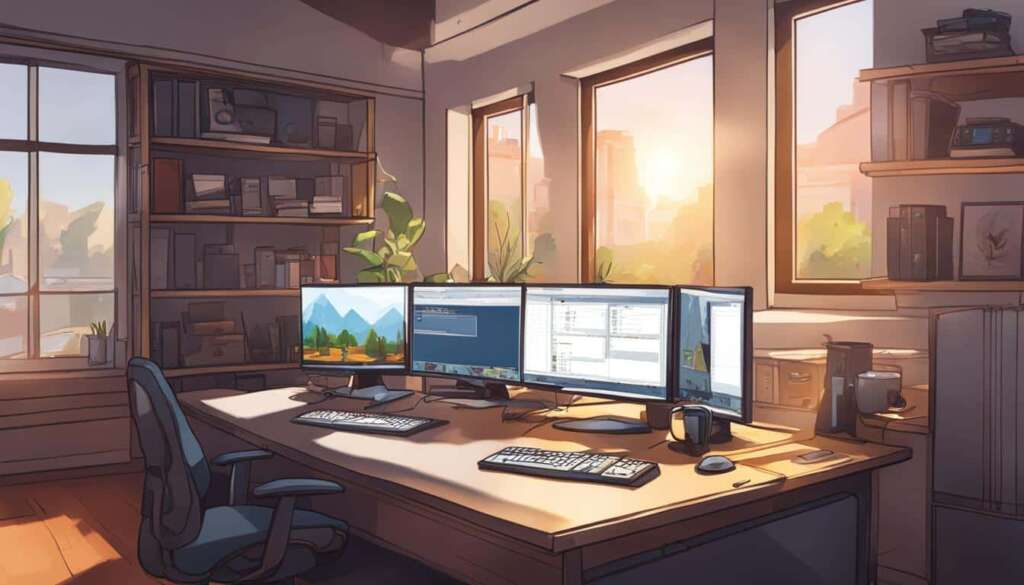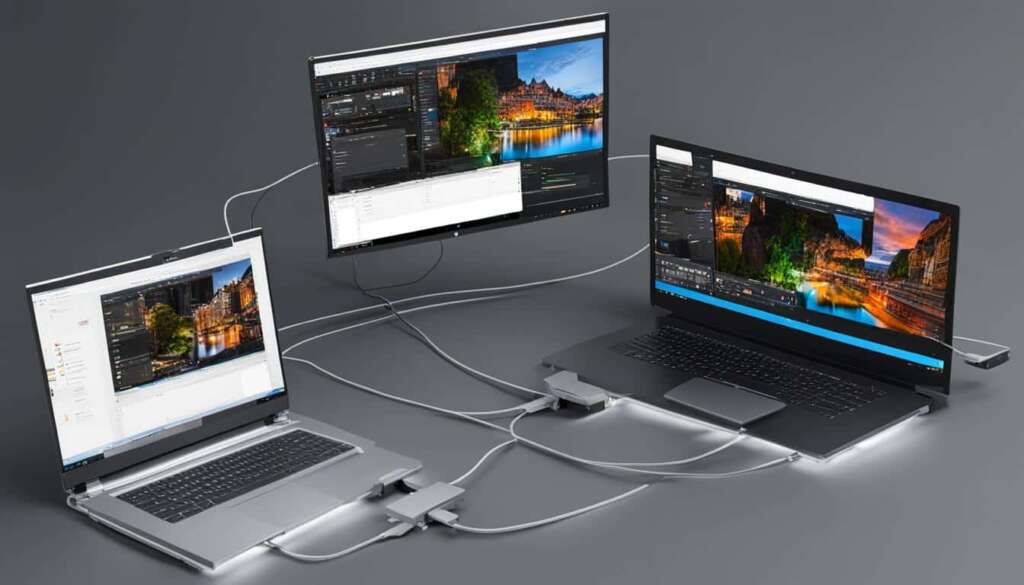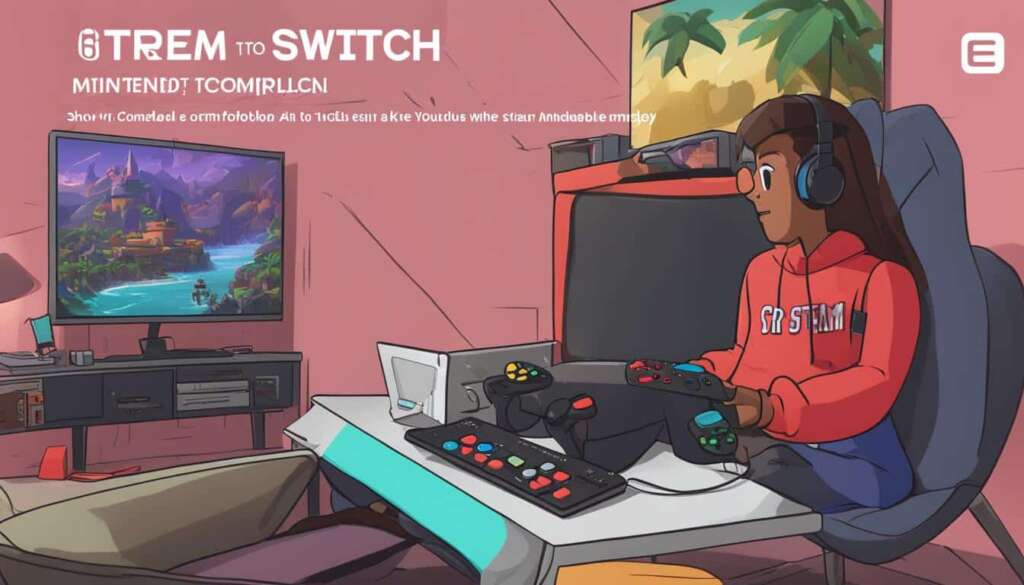Table of Contents
In today’s fast-paced digital world, having a dual monitor setup for your PC can greatly enhance your productivity and multitasking capabilities. Whether you’re a professional who needs to work on multiple documents simultaneously or a gamer looking for an immersive gaming experience, setting up dual monitors is a game-changer.
Setting up dual monitors on your PC is surprisingly simple, and in this guide, we will walk you through the process step by step. We will also provide some valuable tips to ensure that your dual monitor setup is optimized for your needs.
Are you ready to take your PC experience to the next level? Let’s dive into the world of dual monitor setups and discover how to set them up on your PC!
Choosing the Right Monitors for Your Dual Monitor Setup
When it comes to setting up a dual monitor configuration, selecting the right monitors is crucial. Take into consideration the following factors to ensure an optimal setup:
1. Size
For a consistent and visually pleasing display, it is advisable to choose monitors of the same size. However, if you prefer, you can incorporate a smaller monitor for background tasks while using a larger one for your primary work or gaming needs.
2. Aspect Ratio
The aspect ratio determines the width and height of the monitor’s display area. The most common aspect ratio is 16:9, providing a widescreen view. However, ultrawide monitors with aspect ratios of 21:9 or even greater can offer a more immersive experience.
3. Resolution
Having monitors with the same resolution is essential to prevent any mismatch in image quality and cursor movement between screens. Aim for monitors with identical resolutions, such as Full HD (1920×1080) or 4K (3840×2160), to maintain consistency.
4. Color
Consider the color profiles offered by the monitors, including sRGB, Adobe RGB, or DCI-P3. Accurate color reproduction is crucial for tasks like graphic design, photo editing, and video production. Choose monitors that suit your specific color needs.
5. Input Types
Ensure that the monitors you choose have the necessary input types to connect to your PC or other devices. Common input types include HDMI, DisplayPort, and USB Type-C. Verify that your computer’s graphics card supports the desired input type.
6. Panel Types
The panel type affects aspects like color accuracy, viewing angles, and response times. There are several panel types available, such as IPS (In-Plane Switching), VA (Vertical Alignment), and TN (Twisted Nematic). Each has its own strengths and weaknesses, so choose the type that aligns with your priorities.
Tip: When selecting monitors for your dual monitor setup, create a checklist based on the factors mentioned above. This will help you make an informed decision and ensure a seamless experience.
Monitors Comparison
| Aspect Ratio | Resolution | Color Profiles | Input Types | Panel Types |
|---|---|---|---|---|
| 16:9 | 1920×1080 | sRGB | HDMI, DisplayPort | IPS |
| 21:9 | 3440×1440 | Adobe RGB | HDMI, DisplayPort | VA |
| 16:9 | 3840×2160 | DCI-P3 | HDMI, USB Type-C | TN |
Mounting Your Dual Monitor Setup
While most monitors come with their own stands, using a monitor arm or wall mount can provide more flexibility and improve your posture. When mounting your dual monitor setup, it is important to choose the right type of mounting bracket, such as a VESA mount. Ensure that your monitors have the necessary space for the mount. There are various affordable monitor and television mounting hardware options available online, which can help you achieve the desired positioning for your dual monitor setup.
Mounting your monitors not only saves desk space but also allows you to position them at the optimal eye level, reducing neck and eye strain. Monitor stands provide a sturdy base for your dual monitor setup, while wall mounts are ideal for creating a clean and minimalistic look.
When choosing a mounting option, consider the weight and size of your monitors to ensure that the mount can support them. Look for VESA compatibility, as most monitors adhere to this standard. VESA mounts offer a secure and reliable way to attach your monitors to the mount.
Advantages of Using Monitor Mounts
Using a monitor mount for your dual monitor setup offers several benefits:
- Improved Ergonomics: With a monitor arm or wall mount, you can easily adjust the height, tilt, and rotation of your monitors to find the most comfortable viewing position.
- Increased Productivity: Mounting your monitors allows for better organization and a clutter-free workspace, creating a more focused and efficient working environment.
- Enhanced Gaming Experience: A dual monitor setup with properly positioned monitors can provide a more immersive and engaging gaming experience, allowing for a wider field of view.
- Flexibility: Monitor mounts offer the flexibility to switch between landscape and portrait orientations, depending on your needs and preferences.
Ensure that you follow the manufacturer’s instructions and guidelines when mounting your monitors. Proper installation will ensure the safety and stability of your dual monitor setup.
Setting Up and Configuring Your Dual Monitors
Before setting up your dual monitors, it is important to ensure that your device is compatible with dual screens. Both desktop PCs and laptops can support dual monitor setups, but there are a few considerations to keep in mind.
If you’re using a desktop PC, make sure it is running macOS or Windows and has a dedicated graphics card or compatible monitors. This will ensure proper functionality and display settings for your dual monitors. Laptops, on the other hand, may require additional steps for attaching multiple external monitors. You may need to check your laptop’s user manual or consult the manufacturer’s website for specific instructions.
Did you know that smartphones and tablets can also support dual monitors? By using adaptors or wireless casting options, you can connect additional monitors to your mobile device. This feature is available for both Android and iOS devices, allowing you to maximize productivity on the go.
Once you’ve confirmed compatibility, it’s time to set up and configure your dual monitors. Begin by connecting your monitors to your device and positioning them in the desired arrangement. You can adjust the display settings in the operating system’s control panel or system preferences to decide which monitor will be the primary display and how the multiple displays will be positioned. This way, you can create a seamless dual monitor setup that suits your workflow.
FAQ
How do I set up dual monitors on my PC?
To set up dual monitors on your PC, you will need compatible monitors and a device that supports dual screens. Connect the monitors to your PC using the appropriate cables (HDMI, DisplayPort, or USB Type-C) and ensure that they are powered on. Go to your display settings and detect the monitors. Then, configure the display settings to extend your desktop across the dual monitors.
What factors should I consider when choosing monitors for a dual monitor setup?
When selecting monitors for your dual monitor setup, consider factors such as size, aspect ratio, resolution, color profiles, input types, and panel/backlight types. Aim to have monitors of the same size for consistency, but you can also incorporate a smaller monitor for background tasks. Choose monitors with the same resolution to avoid issues with image quality and mouse movement between screens. Consider the aspect ratio, with 16:9 being the most common, and explore options like ultrawide monitors for more screen real estate.
Should I use monitor stands or wall mounts for my dual monitor setup?
Using monitor stands or wall mounts can provide more flexibility and improve your posture. When mounting your dual monitor setup, choose the right type of mounting bracket, such as a VESA mount. Ensure that your monitors have the necessary space for the mount. There are various affordable monitor and television mounting hardware options available online to help you achieve the desired positioning for your dual monitor setup.
Can laptops support a dual monitor setup?
Yes, laptops can be set up with a dual monitor setup. However, it may require additional steps for attaching multiple external monitors. Make sure your laptop has the necessary ports or use adaptors to connect the monitors. Go to your display settings and configure the settings to extend your desktop across the dual monitors.
Can smartphones and tablets support a dual monitor setup?
Yes, smartphones and tablets, both Android and iOS, can support additional monitors with the use of adaptors or wireless casting. Connect the additional monitor using the appropriate cables or casting methods, and configure the display settings to extend your screen across the dual monitors.







